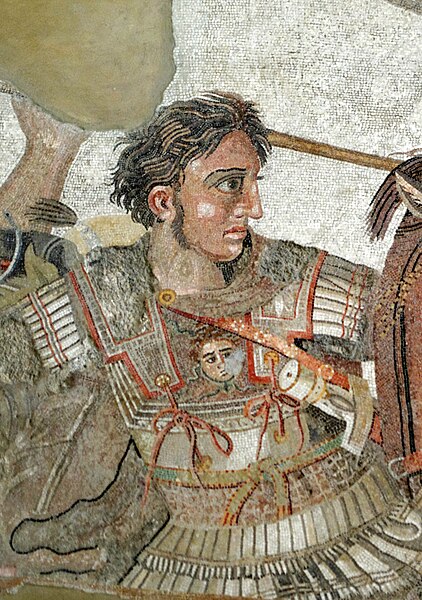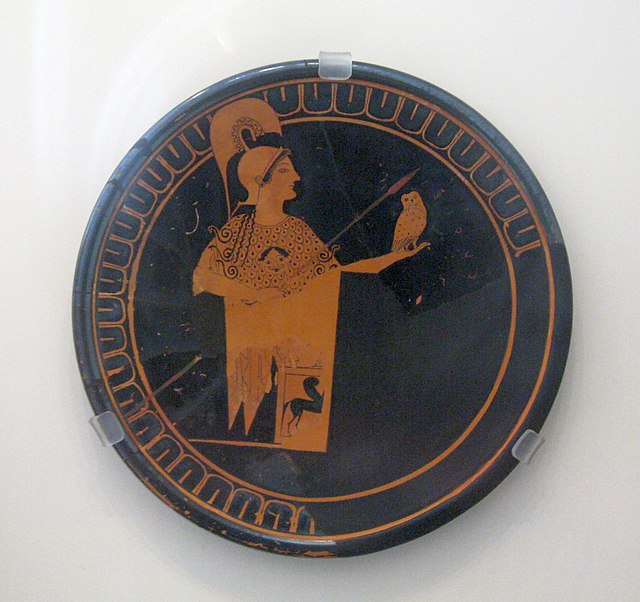The aegis, as stated in the Iliad, is a device carried by Athena and Zeus, variously interpreted as an animal skin or a shield and sometimes featuring the head of a Gorgon. There may be a connection with a deity named Aex, a daughter of Helios and a nurse of Zeus or alternatively a mistress of Zeus.
The aegis on the Lemnian Athena of Phidias, represented by a cast at the Pushkin Museum
Athena's aegis, with Gorgon, here resembles the skin of the serpent who guards the golden fleece (regurgitating Jason); cup by Douris, early fifth century BC (Vatican Museums)
First century BC depiction of Alexander wearing the aegis on the Alexander Mosaic, Pompeii (Naples National Archaeological Museum)
Augustus shown with an aegis thrown over his shoulder as a divine attribute in the Blacas Cameo; the hole for the head appears at the point of his shoulder.
The Gorgons, in Greek mythology, are three monstrous sisters, Stheno, Euryale, and Medusa, said to be the daughters of Phorcys and Ceto. They lived near their sisters the Graeae, and were able to turn anyone who looked at them to stone. Euryale and Stheno were immortal, but Medusa was not and was slain by the hero Perseus.
Running Gorgon; amphora, Munich, Staatliche Antikensammlungen 2312 (c. 490 BC)
Perseus beheading Medusa; Metope from Temple C at Selinus, Antonino Salinas Regional Archaeological Museum 3920 B (sixth century BC)
Athena wearing her snake-fringed Gorgon aegis; plate attributed to Oltos, Munich, Staatliche Antikensammlungen F2313 (c. 525–475 BC)
Fig. 1. Centaur-bodied Gorgon (Medusa) being decapitated by Perseus with averted gaze; Boetian relief pithos, Louvre CA 795 (mid seventh century BC








